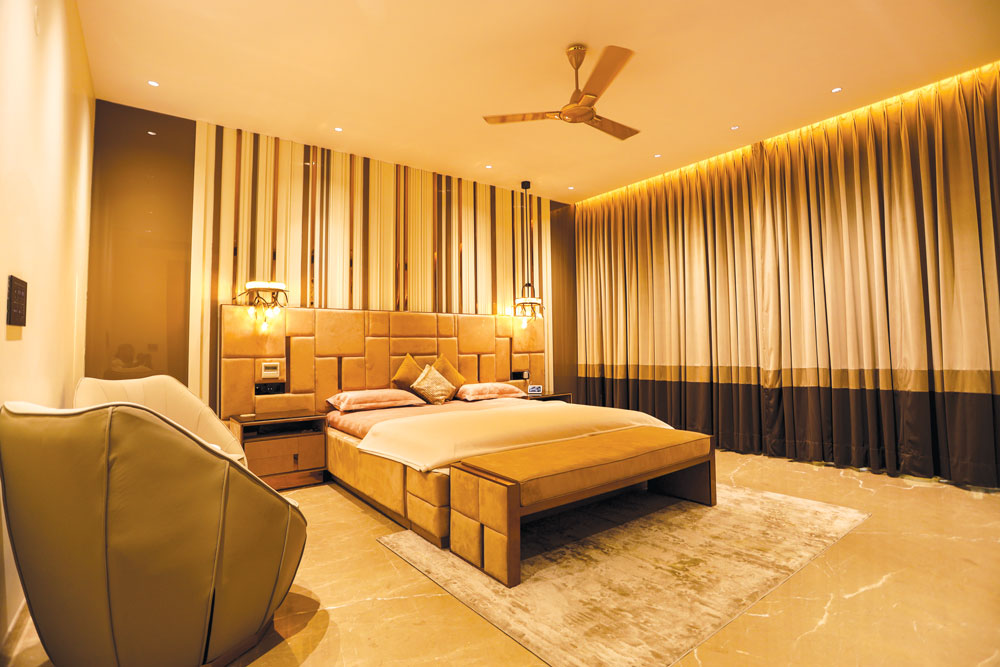THE MOST IMPORTANT 7 PRINCIPLES of INTERIOR DESIGNING
The interior design industry is rapidly evolving and ever-changing but certain principles make the backbone of this industry and remain unchanged. These seven basic principles of interior design are the most important and include harmony, balance, rhythm, proportion & scale, contrast, emphasis and details.


- Sapna Aggarwal,
Creative Director, ANSA Architecture & Interiors
The interior design industry is rapidly evolving and ever-changing but certain principles make the backbone of this industry and remain unchanged. These seven basic principles of interior design are the most important and include harmony, balance, rhythm, proportion & scale, contrast, emphasis and details.
Most important of all is balance. A good design must have a visual balance amongst all elements - colours, shapes, furniture, lighting, and décor. When a room is properly balanced, it reflects confidence and calm in the design. There are three approaches to establishing balance in a design - asymmetrical, symmetrical and radial.
Balance in interior design also signals positive and negative spaces. Too much negative space can make a space look empty and unfurnished and too much positive leads to a cluttered and overcrowded look. The next most important design principle is harmony, which refers to cohesiveness in a space. It may be the theme, style, mood, aesthetic or even the personality of the space. It's the unity of various elements used in the design of a room that's important. All elements must complement one another. Most often, to establish harmony in a room's design, one begins with a focal point and plans things from there.
Rhythm refers to the use of textures, patterns and colours in a way to create visual interest and guide the eye through the room. A design without rhythm often gives a confused and chaotic look to the viewer. This movement between various design elements is essential to establish a visual tempo. Rhythm is achieved through either of the three methods - repetition, alternation and progression.
Another important design principle is that of proportion and scale. This principle guides harmony and rhythm in space. It ensures that all the objects placed in any space look like they belong to each other. Scale is how the size of one object may complement or contrast as compared to another. Proportion is all about the general relationship between objects of various sizes. This is slightly scientific, however, can be easily achieved through careful observation and comparison between different objects and their sizes.
Contrast is one of the most basic and crucial principles of interior design. Through contrast, a sense of drama, variety and playfulness can be achieved in interior design. Contrast refers to the contrast in patterns, colour combinations, interior styles, textures and shapes. Think contrasting elements like stripes with florals, Scandinavian decor with a touch of bohemian style, a mix of matte and glossy paints and more. Lack of contrast in interior design leads to dull monotoned spaces that get the viewer bored too quickly. Contrast builds the interest that makes you fall in love with a space.
Emphasis establishes the importance of a focal point in any particular space. Various elements like pattern, texture, and colours are used to highlight a focal point so that it can dominate as compared to other décor items in the room.
Lastly, attention to detail is one of the seven most defining principles of interior design. Every good design depends on the nitty-grittier, the detail. After all, it's the little things that matter. Without the finishing touches, any room would look incomplete and unfinished. This is also the step where a design can be truly personalized to a homeowner's taste.
Once you're sure you've taken care of all the basic principles of interior designing, you can focus on the details. What's very important is that each of these principles must be kept in mind while designing a space, be it a complete residence or just a corner of your house that needs to be redecorated.
Hits: 1







